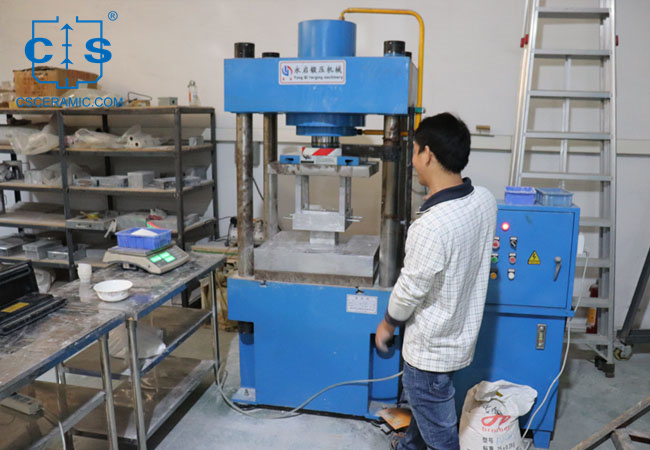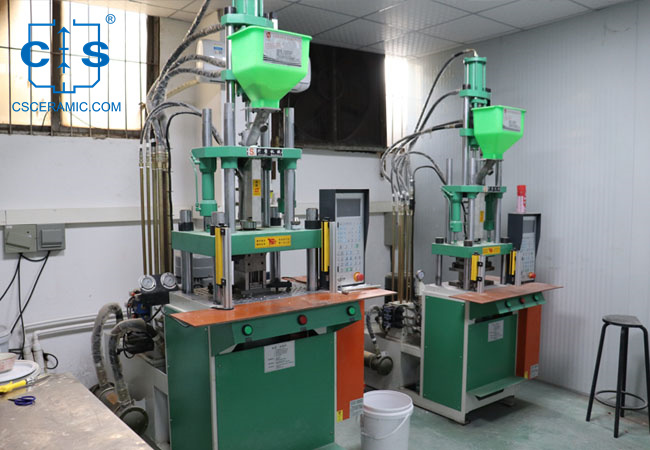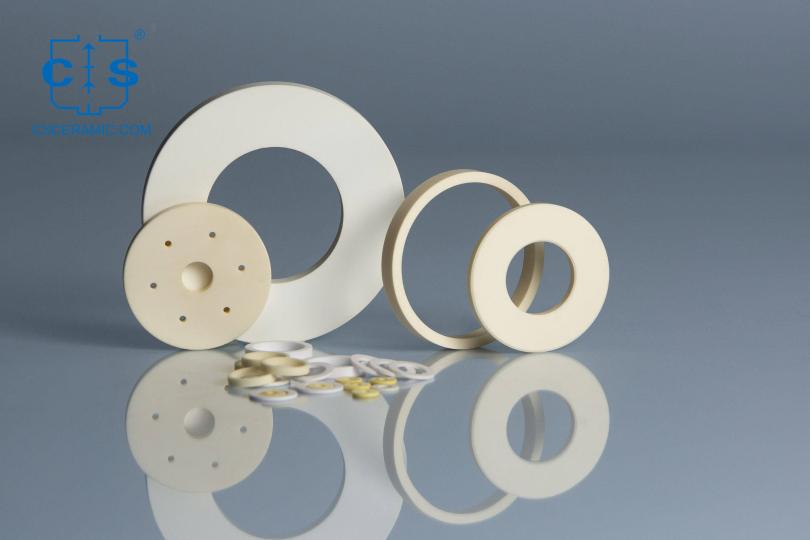Alumina ceramic is a kind of ceramic product with aluminum oxide as the main component. In this article, influence of forming method and processing details on hardness and abrasion of alumina ceramics are briefly introduced.
* Forming Methods of Alumina Ceramic
1.Dry Pressing:
This type of forming method is only suitable for product with simple-structure, whose inner thickness is larger than 1mm and the length to diameter ratio is not more 4:1.
The hydraulic press machines and mechanical press machines are available for dry pressing, and both of them could be applied semi-automatically and automatically. And the extreme pressure of press machines is 200Mpa.
For hydraulic press machines, its uniform press pressure brings different heights to the item when the filling powder material has discrepancy.
While for mechanical press machines, its pressure depends on the quantity of the filling powder. Under this condition, the dimension and quality of items would appear discrepancy after sintering.

2.Slurry Forming:
Slurry forming is the most original method, which uses plaster mold at low cost. And it is suitable for forming a part with a large size and complicated shape.
The critical point of slurry forming is the preparation of alumina slurry. The preparation steps are applying water as flux solvent, adding degumming agent and binding agent, exhausting air after grinding well and pour the mixture slurry into plaster molds.
The capillary of plaster mold has an effect of water absorption, so the slurry would concrete against the mold wall. Casting slurry into hollow mold until the solidified thickness obtains a certain degree, then pour the unnecessary slurry out of the plaster mold.
In order to reduce the shrinkage of blank, it is required to apply high concentration slurry. Therefore, adding organic additives into alumina slurry to build an electronic double layer on the particle surface which could keep the slurry suspended.
In addition, adding other binding agents, such as vinyl alcohol, Methyl cellulose, alginate and dispersing agent, such as Polyacrylamine, gum arabic to make the alumina slurry could be more suitable for slurry forming technique.

*Processing Details affected on hardness and abrasion of Alumina Ceramic
Alumina ceramic is prepared by bauxite and disasporite through chemical method. For its forming techniques, isostatic pressing, slurry forming, dry pressing, injection moulding are available and then sintering with high temperature.
Alumina ceramic has excellent adaptability against external climate, including sun resistance, Acid rain corrosion resistance and outstanding stability. Applying the glaze directly after fine finishing instead of applying any protective coating to its surface and cutting edge.
When sintering, adding composite powder material, such as zirconia, silicon oxide and silicon nitride, would improve the hardness and strength of alumina ceramics, and it has lower water absorption, lower cost and greater brittleness than traditional ceramics.
The hardness of alumina ceramic(HRA80-90) stands second behind diamond. Alumina ceramic could provide excellent hardness property as stainless steel does no matter if it is a poly-crystalline or mono-crystalline phase.
According to the research from Institution of Powder and Metallurgy(Central South University, China), the abrasive resistance of Alumina ceramic is as 266 times as that of manganese steel, and as 171.5 times as that of high chromium cast iron. According to customers’ feedback, alumina ceramic materials for machine parts could extend machines’ service time at least 10 times longer than wear-resistance steel and stainless steel on the equivalent working condition.
The key points to affecting the abrasion of alumina ceramic are listed below.
1.The working environment and duration of work pieces.
2.Impacted by external force, including working pressure, shock pressure, etc.
3.Pressure Medium, including size, temperature and flow rate of granule.
4.Medium, including size, temperature and flow rate of granule.





 info@csceramic.com
info@csceramic.com







 +86 18273288522
+86 18273288522